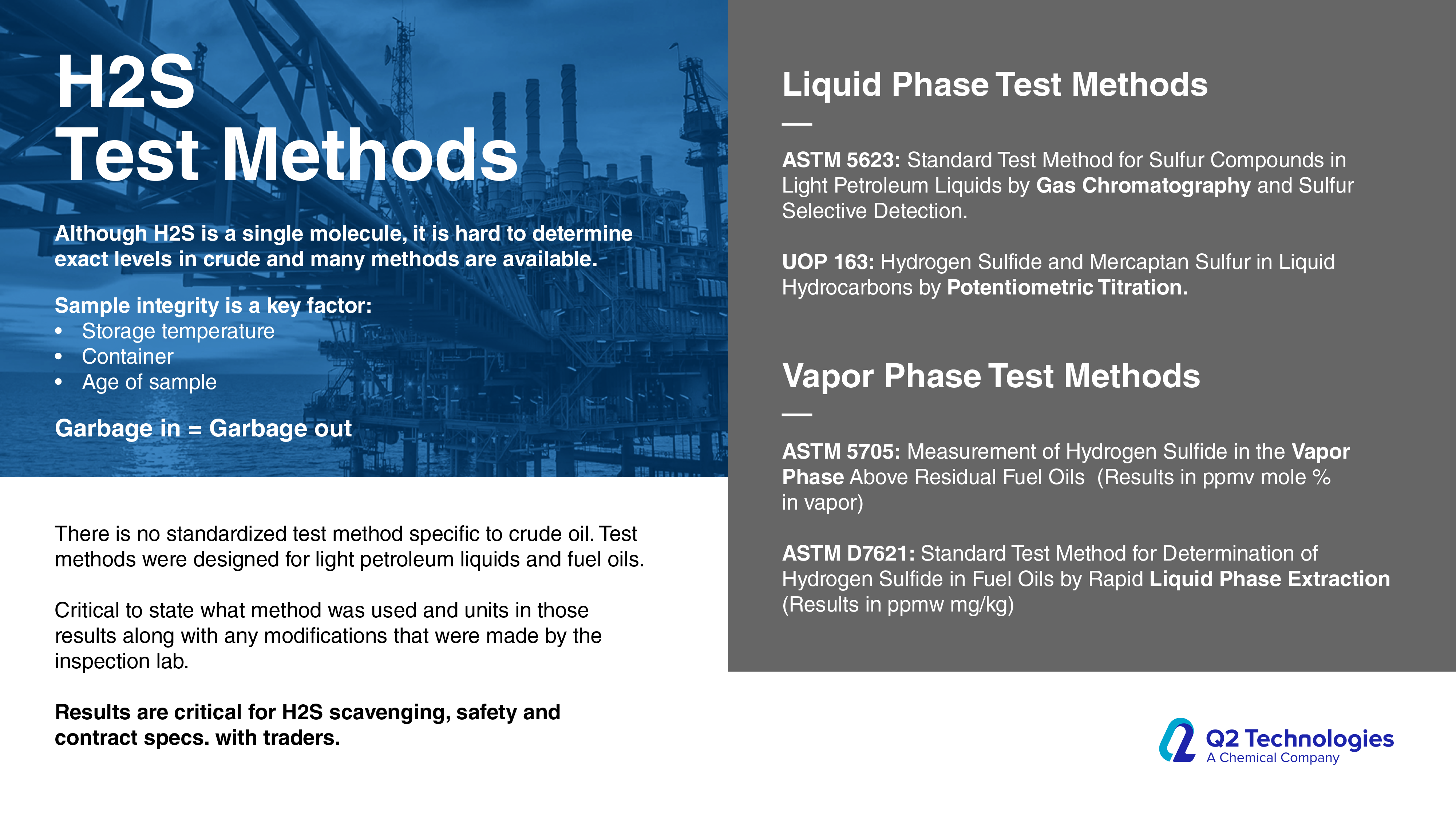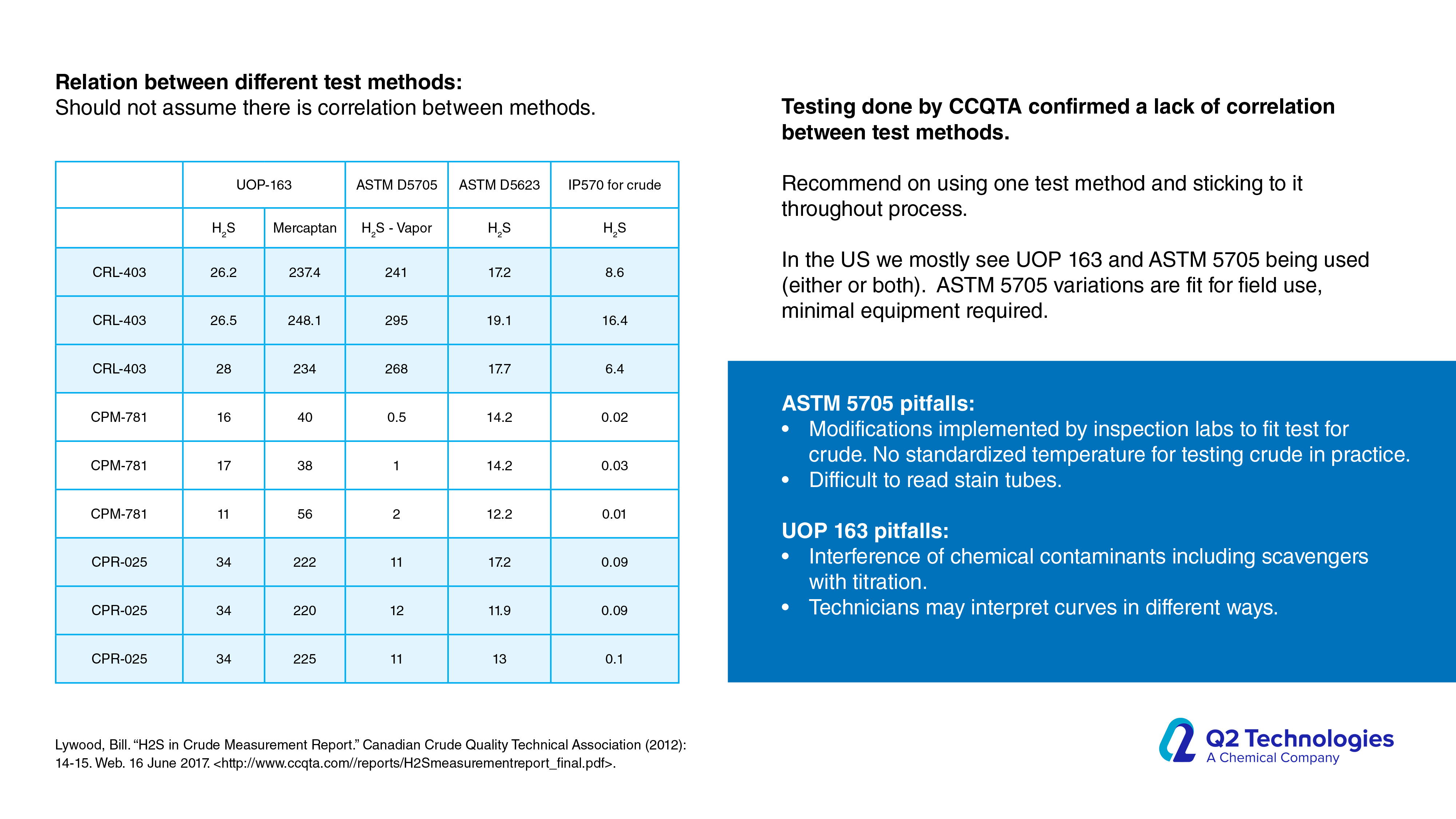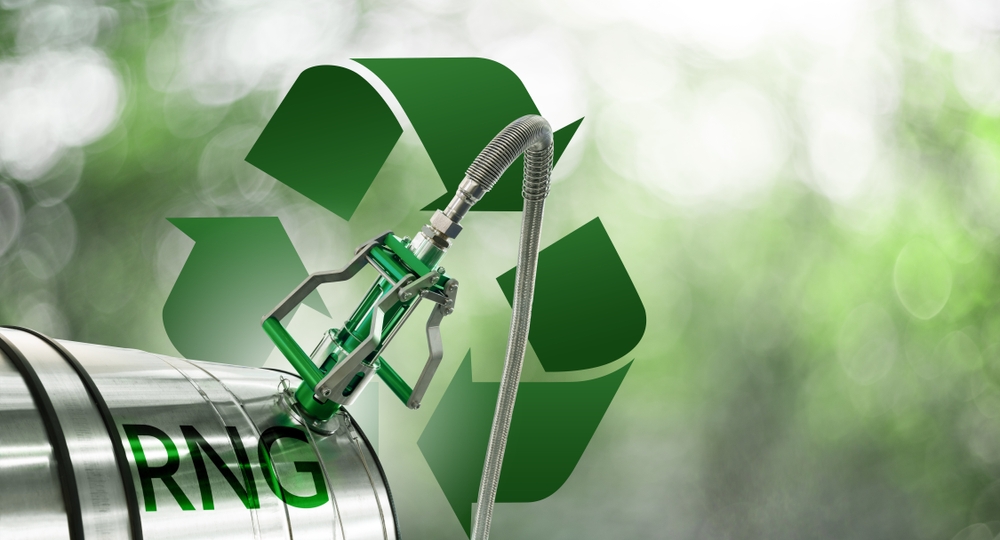
Thursday, March 14, 2019
H2S Test Methods
The presence of H2S in oil impacts not only the oil price but handling requirements. However, there is no standardized…


Q2 Technologies Team
Experts in H2S Scavenging Solutions
With decades of combined experience, the Q2 Technologies team specializes in innovative hydrogen sulfide (H2S) scavenging solutions for the oil and gas, wastewater treatment, and industrial sectors.
Why H2S in Crude Oil Is Dangerous
Hydrogen sulfide (H2S) is a very dangerous, toxic, explosive and flammable, colorless and transparent gas which can be found in crude oil and can be formed during the manufacture of the fuel at the refinery and can be released during handling, storage, and distribution. At very low concentrations, the gas has the characteristic smell of rotten eggs. However, at higher concentrations, it causes a loss of smell, headaches, and dizziness, and at very high concentrations, it causes instantaneous death. It is strongly recommended that personnel involved in the testing for hydrogen sulfide are aware of the hazards of vapor-phase H2S and have in place appropriate processes and procedures to manage the risk of exposure.
Impact of H2S on Operations and Compliance
The presence of H2S in oil impacts not only the oil price but handling requirements. H2S in oil causes corrosion of pipelines and equipment. It is also necessary to meet specs from environmental, health and safety authorities, for compliance purposes and to avoid acid rain, illnesses and even fatalities. However, there is no standardized H2S test method specific to crude oil. Although H2S is a single molecule, it is hard to determine its exact levels in crude and many testing methods are available.
Importance of Sample Integrity
Regardless of the test method to be used, sample integrity is a key factor where one must consistently consider:
Garbage in = Garbage out
All variables need to be controlled and all samples need to follow identical protocol. Ideally, testing is to measure what is actually occurring in the sampling point. However, many sulfur compounds, for example, hydrogen sulfide and mercaptans, are reactive and their concentration in samples may change during sampling and analysis. Even the equilibrium of the vapor phase is disrupted the moment a vent or access point is opened to collect a sample. Because of the reactivity, absorptivity, and volatility of H2S, any measurement method only provides an H2S concentration at a given moment in time. Proper sampling techniques are essential to avoid costly mistakes and ensure accurate results. Since there is a time lapse between taking the sample and testing, it is important not to alter sample conditions in order to get valid test results.
Key Variables to Consider During Sampling
Key Variables as shown on Figure 1:
• Stable temperature of the sample is important in order to be able to compare data from different samples as fair representations of their source. Protocols and procedures stated in the method need to be consistently followed to maintain the sample temperature.
• Container as specified in protocol for selected method since different materials have different implications.
• Age of sample. Older samples have a higher risk of altered results. Storage in ideal conditions can help maintain sample stability but lab results might be different and not comparable.

Figure 1 H2S Testing Methods and Key Considerations
Overview of H2S Testing Methods
Test methods were designed for light petroleum liquids and fuel oils. Different products require different testing methods since variables behave differently and measurements vary accordingly.
When presenting test results, it is of critical importance to state what test method was used and the measuring units in those results along with any modifications that were made by the inspection lab.
The measurement of H2S in the liquid phase is appropriate for product quality control, while the measurement of H2S in the vapor phase is appropriate for health and safety purposes. Test results are critical for H2S scavenging, safety and contract specs. with traders. Q2 Technologies can help mitigate H2S in crude with our Pro3® H2S non amine scavenger and our triazine for scavenging natural gas and some liquid hydrocarbons. Contact us to further discuss how we can help you.
The most common test methods are also shown on Figure 1 including liquid phase methods and vapor phase methods along with the units in which test results are stated.
Comparing H2S Test Methods
Figure 2 shows a comparison of the different test methods though it is important to clarify that no correlation between Methods is to be assumed.

Figure 2 Comparative of Alternative H2S Testing Methods
Q2 Technologies’ Expertise in H2S Mitigation
Q2 Technologies participated in the H2S Mitigation Panel at COQA New Orleans Spring 2019 discussing these H2S testing methods. We will be happy to further discuss this and any other topic to help you get more for your barrel.
FAQs
Maintaining sample integrity is crucial because H2S is volatile and reactive, which means it can change or escape during sampling. Accurate test results depend on preserving the sample’s original composition to ensure reliable H2S measurement.
Q2 Technologies offers a range of chemical scavengers and treatment solutions designed to safely reduce H2S levels in oil and gas streams. Their products improve worker safety, protect equipment, and maintain product quality by effectively controlling H2S.
Vapor phase testing measures H2S gas in the air or gas phase, while liquid phase testing analyzes H2S dissolved in fluids like crude oil or water. Each method requires different sampling techniques to accurately assess H2S concentration in the respective phase.
Related Articles
HOW CAN WE HELP?
Have a question? Need a quote? Our technical staff is here to help you identify the right solution for your project requirements.





